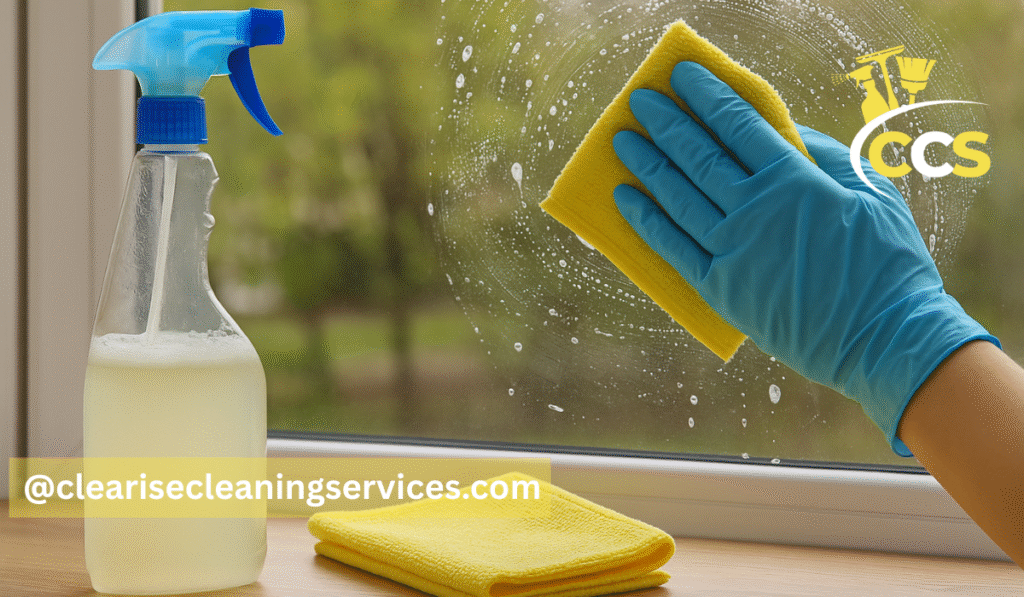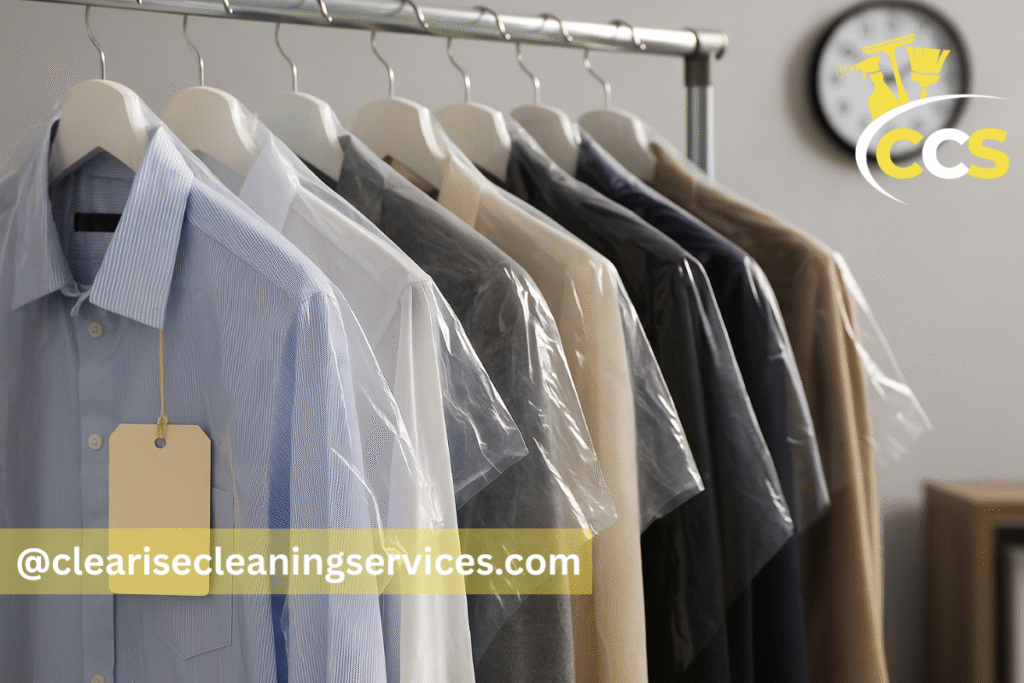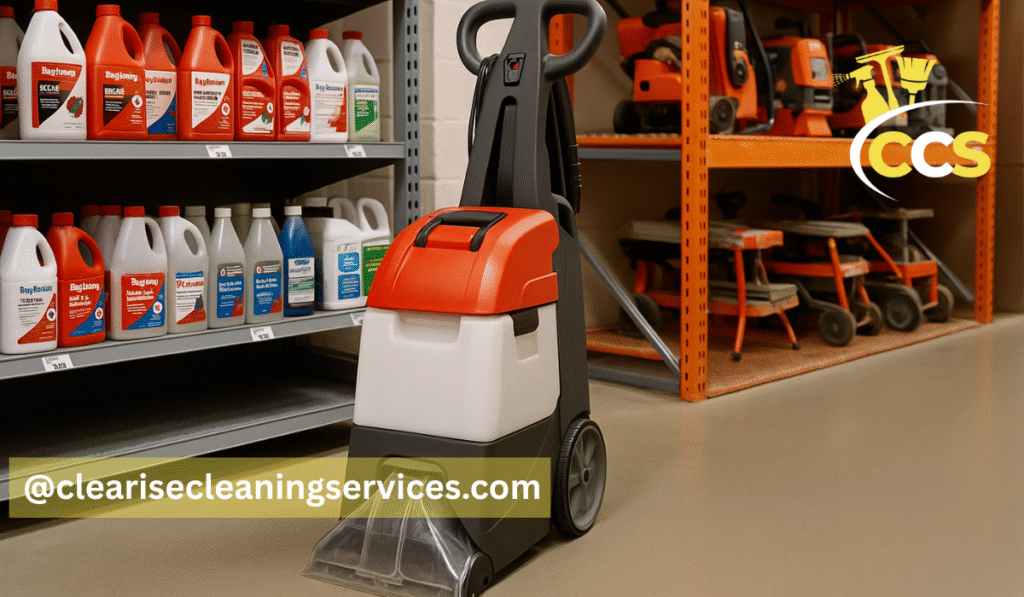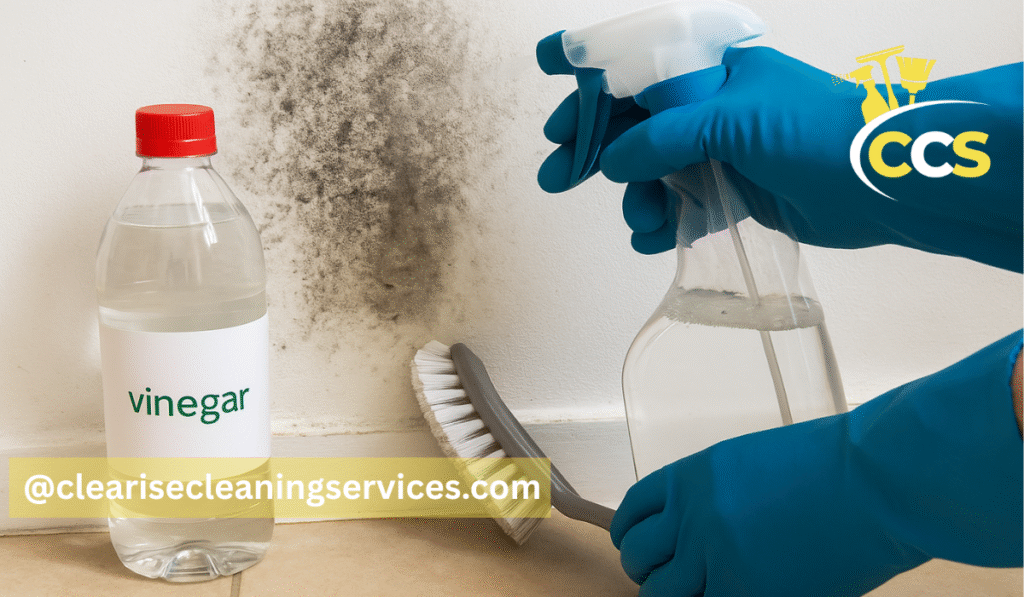When you ask, “what is the best homemade window cleaning solution,” you’re really looking for more than just a quick recipe. Clean windows make your home brighter, safer, and healthier—but the products we use to get them sparkling can also affect our family’s health, the environment, and our budget. That’s why so many people, especially parents, turn to homemade cleaners. They’re affordable, non-toxic when made correctly, and give you complete control over the ingredients.
But what does “best” really mean? For some, it’s a streak-free finish that makes glass look crystal clear. For others, it’s about safety—no harsh chemicals that might harm kids or pets. And for many, it’s a solution that’s simple to mix with everyday items like vinegar, alcohol, or dish soap.
In this article, you’ll find more than just recipes. We’ll break down which ingredients actually work, compare different homemade solutions, share expert tips for streak-free cleaning, and look at how homemade formulas measure up against store-bought products. By the end, you’ll know not just one, but several “best” options—so you can choose the right one for your needs.
Understanding the Basics: What Makes a Good Window Cleaning Solution?
Before you start mixing ingredients, it helps to understand why certain things work on glass and others don’t. A good homemade window cleaner isn’t about fancy chemicals—it’s about balance. You want something that loosens dirt, dries without streaks, and is safe for both your windows and your family.
Key Ingredients and Their Roles
- Water (distilled vs tap): Water makes up most of any cleaning solution. Distilled water is often better than tap because it doesn’t contain minerals that can leave spots or streaks on glass. If your local water is hard (high in calcium or magnesium), distilled is the smarter choice.
- Acidic agents (vinegar, lemon juice): Acids help break down film, fingerprints, and mineral residue. White vinegar is the most common choice—cheap, safe, and effective. Lemon juice works too, and it adds a fresher smell, though it’s less commonly used in bulk recipes.
- Solvents / alcohol (rubbing or isopropyl alcohol): Alcohol speeds up drying and cuts through grease, which is why many streak-free cleaners use it. It’s especially handy if you want a quick-dry formula that doesn’t leave marks.
- Surfactants / mild dish soap: Dish soap helps lift oils, dust, and sticky grime. You only need a tiny drop—too much can leave a cloudy film. Many people use blue Dawn or similar mild soaps because they rinse easily.
- Optional additives:
- Essential oils for fragrance (use sparingly—just a drop or two)
- Cornstarch as a gentle abrasive and anti-streak agent
- Ammonia-free boosters for extra shine (but avoid strong ammonia products around kids or pets)
What to Avoid (Dangerous Combinations & Over-complications)
Not every mix is safe—or smart. Here’s what you should skip:
- Never mix vinegar + bleach: This creates chlorine gas, which is toxic and dangerous even in small amounts.
- Too much soap: More isn’t better—it can leave streaks and sticky residue.
- Harsh chemicals: Ammonia, strong acids, or abrasives might damage window coatings, tints, or wood frames, and they’re not safe in homes with children.
- Over-fragrance or dyes: These might look or smell nice but often leave films behind, making windows dirtier faster.
How Professionals Think: Principles of Glass & Window Cleaning
Window-cleaning pros don’t just think about ingredients—they think about process and science.
- pH, surface tension, and evaporation rate: The best cleaner is slightly acidic or neutral, reduces surface tension so water spreads evenly, and evaporates fast enough to avoid streaks.
- The “two-stage” approach: Step one is loosening dirt with the solution. Step two is removing it completely with a cloth or squeegee. If dirt isn’t removed, it just smears around.
- Glass type & frame material: Tinted, coated, or double-pane windows may need gentler formulas. Wooden frames can absorb vinegar, so be careful to keep liquids off them.
Top DIY / Homemade Window Cleaner Recipes (with Variations)
When people ask “what is the best homemade window cleaning solution,” the truth is—there’s no single winner. Different situations call for slightly different formulas. Below are the most trusted and practical recipes, with their ratios, usage notes, pros and cons, and safety reminders.
Classic Vinegar + Water (Simple & Safe)
Recipe:
- 1 cup distilled water
- 1 cup white vinegar
Usage Notes:
This is the classic DIY recipe that most people try first. It works well on lightly dirty indoor windows, mirrors, and glass tables.
Pros:
- Cheap, non-toxic, easy to make
- Works especially well on fingerprints and light dust
- Leaves a streak-free finish if wiped with microfiber
Cons:
- Can leave streaks in areas with hard water
- Not strong enough for sticky or greasy kitchen windows
- The vinegar smell may bother some people
Safety Tip: Never mix with bleach—vinegar reacts dangerously.
Vinegar + Dish Soap Boost (For Greasy / Outdoor Use)
Recipe:
- 2 cups water
- ¼ cup white vinegar
- 1–2 drops mild dish soap (like Dawn)
Usage Notes:
Adding just a drop of soap helps cut through kitchen grease, pollen, and outdoor grime. Use sparingly, or you’ll get streaks.
Pros:
- More effective on greasy fingerprints and stubborn dirt
- Great for kitchen windows and outdoor glass
- Still safe and non-toxic in small amounts
Cons:
- Too much soap leaves a filmy residue
- Needs extra rinsing if used heavily outdoors
Safety Tip: Use only a drop or two of soap—otherwise you’ll spend more time buffing than cleaning.
Alcohol-Based / No-Vinegar Option
Recipe:
- 1 cup water
- 1 cup 70% isopropyl (rubbing) alcohol
- (Optional: ½ cup vinegar for extra shine)
Usage Notes:
Ideal if you dislike vinegar’s smell or need fast-drying action. Great for mirrors, glass doors, and bathroom windows where moisture lingers.
Pros:
- Evaporates quickly → fewer streaks
- Cuts through grease better than vinegar alone
- Has mild disinfecting properties
Cons:
- Stronger smell than vinegar
- Flammable—keep away from open flames
- Not recommended for delicate tinted or coated glass
Safety Tip: Always label bottles clearly, especially if kids are around.
Hybrid / Multi-Ingredient Recipes (For Stubborn Grime)
Recipe Example:
- 2 cups water
- ½ cup vinegar
- ½ cup rubbing alcohol
- 1–2 drops dish soap
- (Optional: 1 tsp cornstarch for anti-streak power)
Usage Notes:
This “all-in-one” mix combines vinegar’s acidity, alcohol’s quick evaporation, and soap’s grease-cutting power. Cornstarch is an old trick that helps polish glass streak-free.
Pros:
- Tackles tough dirt and sticky grime
- Versatile for both indoor and outdoor use
- Cornstarch helps with polishing effect
Cons:
- More steps to measure ingredients
- Needs extra shaking before each use if cornstarch is included
- Overuse of soap or oils can leave haze
Safety Tip: Store in a spray bottle, shake well before use, and avoid soaking wooden frames.
Specialized Recipes
- DIY No-Wipe Outdoor Window Cleaner
- Mix: ½ cup white vinegar + 1 tsp dish soap + 2 gallons warm water
- Pour into a garden sprayer, apply on outside windows, rinse with hose.
- Best for large exterior windows where wiping isn’t practical.
- Best Indoor Window Cleaning Solution
- Mix: 1 cup distilled water + ½ cup vinegar (no soap).
- Gentle formula—ideal for nursery, bedroom, and family areas.
- Recipe Without Vinegar
- Mix: 1 cup water + 1 cup rubbing alcohol + 1–2 drops mild soap.
- Perfect for surfaces sensitive to acid (like marble nearby) or for those who dislike vinegar smell.
- Best Recipe with Dawn (Blue Dish Soap)
- Mix: 2 cups warm water + 2 tbsp vinegar + 1 drop Dawn.
- Popular for cutting grease, especially in kitchens.
Safety, Storage & Best Practices (Especially for Households with Babies / Kids)
Homemade window cleaners are generally safer than many commercial products, but that doesn’t mean you can ignore safety. If you have young children or pets, paying attention to how you mix, store, and use these solutions is just as important as the recipe itself.
Child- and Pet-Safe Considerations
- Use non-toxic, mild ingredients: Stick to basics like water, vinegar, rubbing alcohol, and a drop of mild dish soap. Skip anything harsh, such as ammonia or chlorine-based additives.
- Keep solutions out of reach: Always store spray bottles in high cabinets or locked storage, just as you would with other household cleaners.
- Clearly label bottles: A simple label with the name and ingredients prevents mix-ups and helps others in your household know what’s inside.
- Avoid strong fragrances or irritants: Essential oils may smell nice but can trigger allergies in sensitive children or pets. Use sparingly, or skip them altogether.
Storage Guidelines
- Use new or thoroughly cleaned spray bottles: Residue from old cleaners can react with your DIY mix. Start with a fresh bottle if possible.
- Label with date and ingredients: Homemade cleaners don’t last forever. Writing down what’s inside and when you made it avoids confusion.
- Shelf life: Most simple vinegar- or alcohol-based solutions last a few weeks. If your cleaner looks cloudy, separates oddly, or smells “off,” discard it and make a new batch.
Safety Precautions & Warnings
- Ventilation while cleaning: Even natural cleaners release fumes. Open a window or turn on a fan when spraying indoors.
- Avoid spraying on carpets or floors: Vinegar and alcohol can discolor some fabrics and flooring. Use controlled sprays directly on glass.
- Never mix with bleach or other chemicals: Vinegar + bleach = chlorine gas, which is highly toxic. Keep recipes simple to avoid risks.
- Protect sensitive skin: If you’re prone to irritation, wear gloves. Goggles may be helpful when cleaning overhead windows to prevent splashes in your eyes.
Tools & Techniques: Getting Streak-Free Results
Even the best homemade window cleaning solution won’t deliver sparkling results if you use the wrong tools or technique. Professionals know that the secret to clear, streak-free glass is equal parts formula, tools, and method.
Choosing the Right Tools
- Microfiber cloths & lint-free towels: These are the gold standard for glass. They absorb moisture without leaving fibers behind. Old cotton T-shirts can also work in a pinch.
- Squeegee: This tool is a professional favorite. A squeegee pulls the solution down and off the glass in one smooth motion, preventing streaks. Types include handheld squeegees for small windows and extension-pole versions for tall or outdoor glass.
- Soft cloths or lint-free sponges: Useful for scrubbing without scratching, especially on frames and corners where dirt builds up.
- Spray bottles: Help you apply a fine mist of cleaner without soaking the surface.
- Extension poles & scrub brushes: Handy for exterior windows or high spots you can’t reach safely with a ladder.
Step-by-Step Technique
- Dust or pre-clean first: Wipe away cobwebs, dust, and loose debris. Cleaning directly over dirt just smears it around.
- Apply your solution: Spray evenly over the glass. For outdoor or very dirty windows, you can also flood the surface with a sponge or sprayer.
- Wipe or squeegee method:
- With a cloth: Wipe from top to bottom, overlapping slightly to avoid streaks.
- With a squeegee: Start at the top, pull down in straight lines, and wipe the blade after each pass.
- Buff for shine: Use a dry microfiber cloth or crumpled newspaper to polish edges and remove any leftover streaks.
Timing & Environmental Tips
- Avoid direct sunlight: Heat causes the cleaner to dry too fast, leaving streaks before you can wipe it away.
- Choose cooler, cloudy days: These give you more time to work and reduce glare so you can actually see the streaks you’re removing.
- Interior vs exterior: Indoors, less solution is better to prevent drips on walls or floors. Outdoors, use a bit more solution and rinse well if needed.
Troubleshooting Common Issues
- Streaks or cloudy film: Usually caused by too much soap, dirty cloths, or quick drying. Solution: cut back on soap, use distilled water, and always use a clean microfiber.
- Mineral spots (from hard water): Try using distilled water in your recipe or spot-clean with vinegar directly on stubborn marks.
- Smudges & fingerprints: Alcohol-based solutions or a final buff with a dry microfiber cloth can help remove oily marks completely.
- Sticky residues: For tape or sticker residue, apply rubbing alcohol directly and let it sit for a minute before wiping.
Comparative Analysis: Homemade vs Commercial Products
Homemade cleaners and store-bought products both have their place. To decide which is right for you, it helps to look at the differences in cost, performance, and health factors.
Cost Comparison & Value
One of the biggest advantages of homemade solutions is price. A gallon of vinegar, a bottle of dish soap, and some rubbing alcohol can last months and cost far less than a single bottle of commercial cleaner. With DIY mixes, you can also refill spray bottles again and again, which saves money and reduces waste. On the other hand, commercial cleaners are more expensive per ounce and need to be replaced more often.
Performance & Limitation Comparison
Homemade recipes usually work very well for everyday fingerprints, light dust, and smudges. However, commercial products may perform better when you’re dealing with heavy grime, construction dust, or paint splatters. Specialty glass—like tinted, UV-coated, or laminated windows—can sometimes react poorly to vinegar or alcohol, and in those cases, a manufacturer-approved store-bought cleaner is safer.
Environmental & Health Considerations
Homemade solutions are more eco-friendly because they use simple ingredients and cut down on packaging waste. They also improve indoor air quality since you’re avoiding harsh chemicals, synthetic fragrances, and ammonia. This makes a big difference in homes with infants, pets, or allergy-prone family members. Store-bought cleaners, unless eco-certified, often come with stronger scents and chemical residues that aren’t as family-friendly.
When to Use Commercial Products (or Hybrid Approach)
Most households will find that a homemade cleaner does the job 90% of the time. Still, it can be useful to keep a bottle of commercial cleaner on hand for extreme situations, like post-renovation cleaning or tough water stains. A smart approach is hybrid—use homemade solutions for regular maintenance, and eco-certified store cleaners as a backup when you need extra power.
Expert Insights, Tips & Lesser-Known Tricks
Sometimes the best results come from insider advice and small adjustments that most people overlook. Here are some expert recommendations and practical hacks that can make your homemade window cleaning routine even more effective.
Interview / Quoted Expert Tips
Professional window cleaners usually keep things simple. Most recommend a balanced solution of water, vinegar, and just one or two drops of mild dish soap for regular cleaning. They stress the importance of microfiber cloths or a good-quality squeegee, since tools often matter more than the exact recipe. For coated or double-glazed windows, optics specialists suggest avoiding strong acids and sticking to neutral or alcohol-based cleaners to prevent long-term damage. Frequency also matters—cleaning every few months prevents buildup, which makes each session faster and easier.
Hacks & Uncommon Approaches
Some traditional methods are still surprisingly effective. For example, using crumpled newspaper for the final buff can give glass a polished shine, though microfiber is a cleaner option for those with ink-sensitive hands. Another uncommon trick is applying a light layer of rain-repellent or diluted wax polish after cleaning, which helps water bead off the glass—best used sparingly on exterior windows. Many pros also recommend a “two-pass” method: first clean with your chosen solution, then buff with plain distilled water for that crystal-clear finish. In modern settings, steam cleaners can safely handle some interior glass, while ultrasonic or magnetic cleaners are increasingly popular for large or hard-to-reach exterior windows.
Seasonal / Regional Adjustments
Where you live makes a difference. In dusty or pollen-heavy regions, you may need to clean more often, especially in spring. If you live in a hard water area, always use distilled water in your solution or rinse windows with distilled water afterward to prevent mineral spots. In winter, condensation inside homes can leave streaks, so it helps to use an alcohol-based cleaner that evaporates quickly and prevents fogging. Adapting your routine to your environment ensures your windows stay clearer for longer.
Step-by-Step Plan: How to Choose & Use Your Best Solution (for New Parents)
Choosing the “best” homemade window cleaning solution doesn’t have to be confusing. With a few simple steps, you can match the right recipe to your family’s needs and keep cleaning stress-free.
Quick Decision Guide
- If you have sensitive children or pets, skip vinegar-based recipes and use alcohol + water with a drop of mild soap.
- If you’re dealing with heavy dirt or greasy kitchen windows, add a small amount of dish soap or use a vinegar + soap blend.
- For outdoor windows, pick a rinse-friendly formula you can spray and wash off with a hose.
Sample Cleaning Routine
- Interior windows: Every 2–3 months is enough for most homes.
- Exterior windows: Twice a year, or seasonally if you live in a dusty or high-pollen area.
- Spot cleaning: As needed—fingerprints and smudges are easier to remove right away than later.
Involving Children Safely
Older kids often like to help. Give them a damp microfiber cloth to wipe lower panes or frames (without spray bottles). It keeps them engaged and teaches responsibility without exposing them to cleaning chemicals.
Simple Checklist for Each Session
- Gather tools: microfiber cloths, spray bottle, squeegee, small bucket.
- Pre-clean: wipe off dust, webs, or loose dirt.
- Spray or apply your chosen solution.
- Wipe or squeegee top to bottom.
- Buff edges with a dry cloth for extra shine.
- Step back, check for streaks, and re-touch if needed.
Conclusion
So, what is the best homemade window cleaning solution? The truth is, there isn’t a single answer—it depends on your priorities. If you care most about safety, choose mild, non-toxic mixes. If you want streak-free shine, add alcohol or distilled water. For ease and affordability, vinegar and water will do the trick.
Start with a small batch of one recipe, test it, and adjust until you find what works best for your windows. Combined with the right tools and technique, a homemade cleaner can often outperform commercial products without the extra cost or chemicals.
For new parents especially, this approach offers peace of mind: you get clean, clear windows without worrying about harsh residues around your children. Try one of the recipes above, see how it fits your home, and share your experience—you may discover your own “best” formula along the way.
FAQs
What Is The Best Homemade Window Cleaning Solution Overall?
The simplest and most reliable option is a mix of equal parts distilled water and white vinegar. It’s safe, affordable, and works well for everyday streak-free cleaning.
How Do I Make A Homemade Window Cleaner Without Vinegar?
You can mix 1 cup water with 1 cup rubbing alcohol and add a drop of mild dish soap. This formula dries quickly and is ideal for families who dislike vinegar’s smell.
Is Rubbing Alcohol Safe To Use On Windows?
Yes, rubbing alcohol is safe on most standard glass and helps prevent streaks. However, avoid it on tinted or coated windows unless the manufacturer says it’s okay.
How Often Should I Clean My Windows?
Interior windows usually need cleaning every 2–3 months, while exterior windows should be done at least twice a year. In dusty or high-pollen areas, more frequent cleaning may be needed.
Can I Use Dish Soap In Homemade Window Cleaner?
Yes, but only a drop or two. Dish soap helps cut grease but using too much will leave streaks and a cloudy film.
Disclaimer: The information in this article is provided for general educational and household purposes only. While homemade window cleaning solutions are generally safe when used correctly, results may vary depending on water quality, glass type, and cleaning methods. Always test any solution on a small, hidden area first to ensure it does not damage coatings, frames, or specialty glass. Avoid mixing cleaning ingredients with bleach or other chemicals, as this can create harmful reactions. If you have sensitive skin, respiratory conditions, or young children and pets at home, take proper safety precautions such as wearing gloves, ensuring ventilation, and keeping cleaning products out of reach. This article does not replace professional cleaning or manufacturer’s care instructions. Use recipes and tips at your own discretion.
Thanks for visiting Clearise Cleaning Services! Discover more helpful tips and expert cleaning insights by exploring our related categories.




